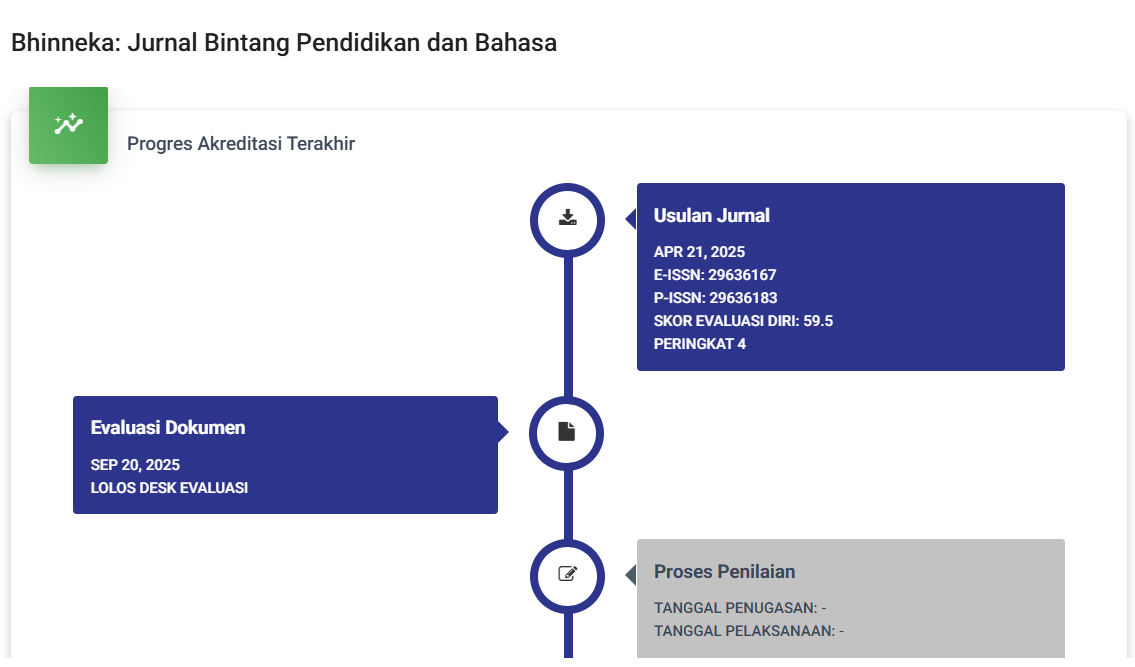Analisis Struktur Naratif Pada Film Avatar The Legend Of Aang: The Last Airbender
DOI:
https://doi.org/10.59024/bhinneka.v1i1.165Keywords:
Narrative structure, elements, filmAbstract
Analysis of narrative structure as an intermediary in understanding stories as well as conveying messages and meanings through moral values, religious teachings and educative culture. The problem being studied is whether the script writer is able to reflect the elements of nature in the film series Avatar The Legend of Aang: The Last Airbender in the characters. Natural elements which include water, earth, fire, air in the Avatar series The Legend of Aang: The Last Airbender, are the basis for the formation of the character's characters, these elements have a close relationship with natural elements that exist in Javanese human life and the embodiment of energy in human life. Java. The purpose of this study is to make it easy for readers to understand the symbolic character and understand the narrative structure, by using qualitative methods and as a theoretical basis that is considered appropriate to discuss it, understanding the narrative and natural elements reflected in the character of the characters is used a narrative structure approach, this approach its orientation is to study the systematic stages of script writing to get the essence of a story. In the narrative structure there are substances that relate to each other to form a series of stories including: 1. The structure of the first three acts contains set-up or introduction, the second act contains turning points and the third act describes the resolution or resolution. The interesting thing about this series is the discovery of story problems and conflicts that usually occur in the adult category but are translated into teenage figures and then packaged in a narrative structure that is easy for the audience to understand.
References
Si Wong(t.t). Diambil 4 Februari 2022, dari Avatar Wiki website: http://avatar.fandom.com/wiki/Si_Wong_Desert
Trianton, T. (2013). Film: Sebagai Media Belajar, Yogyakarta: Graha Ilmu.
Widyananda, R. F. (n.d.). Pengertian dongeng adalah suatu karya sastra lama penuh
khayalan ketahui cirinya. dapat diakses pada URL:
http://www.merdeka.com/Jatim.html.
Astiti, M. S., Wardarita, R., & Fitriani, Y. (2020). The Preservation of Balinese Spoken Language at the Ngaben and Potong Gigi Event. Jadila: Journal of Development and Innovation in Language and Literature Education, 1(2), 139-149. Retrieved from https://ejournal.karinosseff.org/index.php/jadila/article/view/42
Dedi, D., & Cekman, C. (2018). Kohesi Leksikal dalam Acara Berasan Masyarakat Sindang Kelingi Musi Rawas. Silampari Bisa: Jurnal Penelitian Pendidikan Bahasa Indonesia, Daerah, dan Asing, 1(1), 66–83. doi:10.31540/silamparibisa.v1i1.15
Goziyah, G., Uyun, I. I., & Fabiola, S. (2020). Aspek Gramatikal dan Leksikal pada Lirik Lagu Jangan Rubah Takdirku Karya Andmesh Kamelang. Diksa: Pendidikan Bahasa dan Sastra Indonesia, 6(2), 58-64.
Isnaini, H. (2023). Semesta Sastra (Studi Ilmu Sastra): Pengantar Teori, Sejarah, dan Kritik. Bandung: CV Pustaka Humaniora.
Kusmiarti, R., Yuniati, I., & Noermanzah. (2020). Improving Student Communication Skills In Learning Indonesian Language Through Collaborative Learning. Retrieved from osf.io/9km3u. International Journal of Scientific and Technology Research, 9(1).
Muzakka, M. (2020). Nilai-Nilai Profetik dalam Dua Lirik Lagu Karya Rhoma Irama Kajian terhadap Lirik Lagu “Akhlak” dan “Virus Corona.” Nusa: Jurnal Ilmu Bahasa dan Sastra, 15(1), 13–22. doi:10.14710/nusa.15.1.13-22








